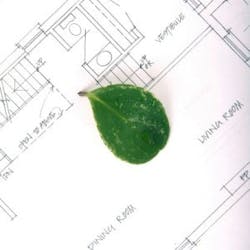Melissa Baldridge, of GreenSpot Global, explains the paradoxes that trip up green home appraisers.
A valuation premium for green homes and energy efficiency is a lot like Schrödinger’s cat, says a new study released by the Colorado Energy Office. If you expect to see a high-performance home sell and appraise for more, it probably will.
Getting a valuation bump for high-performance homes has been elusive for many builders and developers. But the peer-reviewed appraisal study shows that growing levels of energy efficiency in homes have additional “contributory value,” and that trend will continue as data rolls in from the marketplace.
Author and appraiser Lisa Desmarais, who also wrote a solar valuation study in 2013, says that solar wasn’t cool, to say nothing of valued, in appraisals. Until it was.
“You have to pay attention to energy efficiency. Every appraiser used to say solar added zero value. Now they act like they knew it all along,” she says. “I think this is similar to looking at real estate trends. All this is moving in the same direction, but we haven’t seen it pop.”
The report is exhaustive, and she boiled it down from hundreds of pages to a manageable 200, thankfully avoiding appraiser-speak and jargon. She surveyed hundreds of area homes, looking for data from the multiple listing services (MLS), appraisals, HERS ratings, energy audits and interviews with real estate professionals.
The studied homes in Denver/Boulder ranged from $200,000 to $1.2 million, and from 900 to 3,000 square feet. What linked them was their emphasis on energy efficiency – in the designed elements, the languaging about those features, and the data trail when the houses sold.
Desmarais makes an important distinction between systems efficiency (anything that saves energy or water and can be measured) and softer green features (harder-to-quantify traits like healthier indoor air, walkability, smaller construction waste streams and structure durability.) The study finds both efficiency and green features add value to homes.
One big takeaway is that home performance and energy efficiency are often invisible systems, an interplay of many elements that can’t always be seen by the untrained.
One example is a BFF of mine (not in the study) who has a rambling Victorian home, built in the 1890s in central Denver – leaded glass windows on the verge of collapse, a leaky house that can’t hold a steady temperature, and an upstairs attic space with 15 percent of the insulation required. Yet she has a 97 percent efficient furnace and LED lights. Is the house efficient? No. Does it have efficient features? Yep. It’s paradoxes like these that have tripped up appraisers and real estate professionals until now.
To give appraisers an additional handle for this specialty, Desmarais took the Fannie Mae “condition” and “quality” rating labels and created a six-tier efficiency scale. The quick-and-dirty
Green Leaf Plans courtesy of NAHBNow.com.
thumbnail should help non-expert real estate pros estimate a home’s energy use.
Another critical point Desmarais makes is that it’s a super idea to work with an energy professional (like a HERS rater or energy auditor). That input is vital to identifying and quantifying these features. As a contributor to the study, I put a company shirt on Desmarais and had her tag along with me on a HERS rating so she could experience the process and minutiae of producing an energy model.
While the study is great news for those of us living in places where green homes matter, do folks living where that’s not the case have any hope? B/c of cheap kilowatt hours? Politics? Fossil fuel-centrism? Yes, if for no other reason than as the coasts and inland emerald cities (like Denver, Chicago and Atlanta) surge forward, these bellwether places will pull the rest of the country.
Desmarais says, regardless of where folks live, real estate pros must put this critical data in the MLS where appraisers can find it. Selling a green home? Put energy audits in there, HERS ratings (yes, all 50 – 60 pages, or more), marketing pieces, ALL OF IT. [ENERGY RATERS AND REAL ESTATE SALESPEOPLE, SHE’S TALKING TO YOU.]
“Energy efficiency will continue to grow in importance,” she says. “We need your energy documents. Put them in the MLS.”
The study, “An Early Look at Energy Efficiency and Contributory Value, is available here.
Melissa Baldridge is co-owner of GreenSpot Global – a vertically integrated green-building company specializing in land and deal sourcing, consulting and green certifications, and finished product sales.








